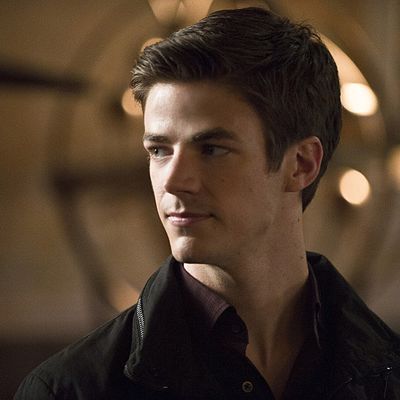
The Flash is one of DC ComicsÔÇÖ longest-running (though admittedly second-string) franchises, with various incarnations of the character appearing almost continuously in comics since 1939. The super-fast hero ÔÇö able to run anywhere between the speed of sound and the speed of light, depending on when you ask ÔÇö gets his second chance at live-action-TV success with this seasonÔÇÖs CW series The Flash (a big-budget series came and went on CBS from 1990ÔÇô91). And while DC Chief Creative Officer Geoff Johns ÔÇö himself a Flash comic-book writer of great renown ÔÇö will likely encourage the showÔÇÖs producers to mine the characterÔÇÖs nine-decade history for villains and story lines, there are a few notable elements that are unlikely to make the cut (unless the show goes the┬áSmallville┬ároute and lasts ten seasons, by which time all bets are off).
[Disclaimer: I worked for many years as an editor and media-development executive at DC Comics, but left the company before the current TV show was developed.]
Rogues by Any Other Name
Apart from Batman, the Flash may have the best ÔÇ£rogues galleryÔÇØ in comics. And where many of BatmanÔÇÖs villains are just thugs with mental disorders and flashy gimmicks, the FlashÔÇÖs villains have cool weapons and superpowers, even if some of them seem like they came from some sort of web-based ability generator (e.g.: giant + mental handicap + high-tech armor = Big Sir).
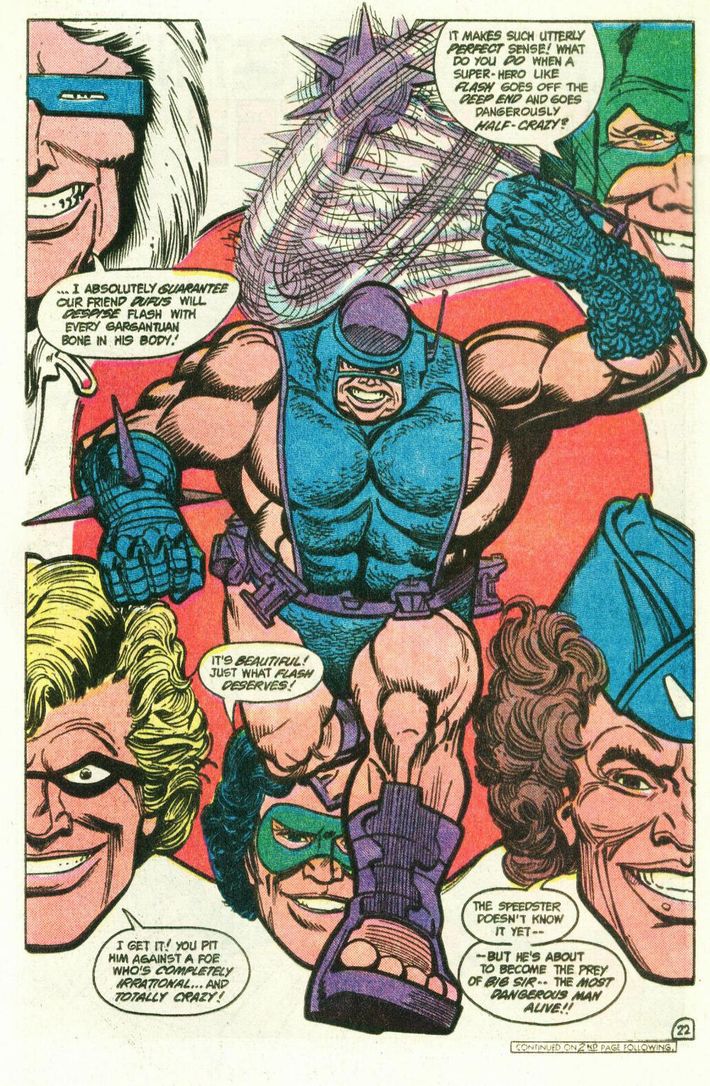
In the pilot, viewers saw a more realistic (because less realistic would be almost impossible) take on Flash mainstay Weather Wizard, whose powers are about what youÔÇÖd expect. And there are name-drops for the FlashÔÇÖs opposite number, alternately known as either Reverse-Flash or the not-at-all-better Professor Zoom; and Grodd, a super-strong, super-intelligent gorilla with mind-control powers. But even though they made Z-list villain Multiplex (a body-duplicating baddie from a different DC series) into a decent one-off threat in last nightÔÇÖs second episode, and casting announcements have already been made for Captain Cold (a guy with a gun that freezes things) and Head Wave (a guy with a gun that shoots fire at things), there are a few Flash villains who may still be too silly.
While Captain Boomerang ÔÇô an Australian armed with trick boomerangs and a ridiculous dialect ÔÇô will be making his way to the much-anticipated Flash-Green Arrow┬ácrossover later this season,┬áthereÔÇÖs pretty much no chance his fellow military-sounding villain┬áColonel Computron will make the grade. This villain turned the Flash into energy and trapped him in the world of videogames (a year before the release of Tron), but barely survived the Atari era he was clearly intended to cash in on.*
IÔÇÖd be remiss if I didnÔÇÖt mention one of FlashÔÇÖs only female foes, the Golden Glider. Created in the 1970s, GG is a former figure skater who wears high-tech ice skates that let her coast on any surface, even air. Her weapons include jewels (that hypnotize people) and rings (that are poison!). In an era where readers were mostly young men, this helped reinforce the important, not-at-all sexist idea that women liked skating, jewels, and rings, and were also mind-controlling villains who would poison you if they could.
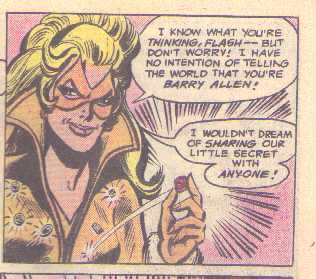
But the winner for worst Flash villain of all time might just have to be the Rainbow Raider, a color-blind baddie with a secret identity ÔÇö Roy G. Bivolo. (Name obviously taken from the ROYGBIV mnemonic device for the colors of the spectrum.) Created in 1980, just a year or two too late to make the rainbow flag a symbol of color-based supercriminals rather than one of inclusiveness and equality, Rainbow Raider had an origin that combined the worst of TV movies of the week with a bunch of overwrought comic-book tropes: a brilliant painter whose success was hampered by color-blindness; a genius optometrist father who, before his death, designed his son a pair of high-tech goggles to fix his eyesight. While the goggles didnÔÇÖt cure RoyÔÇÖs problem, they did possess all sorts of light-manipulating powers: They could create solid objects out of light, affect peopleÔÇÖs emotions, and even make people invisible. Understandably angry that he couldnÔÇÖt have a career in art, Roy made the only sensible choice: not selling his fatherÔÇÖs goggles and their underlying patents for millions, but pursuing a life of crime.
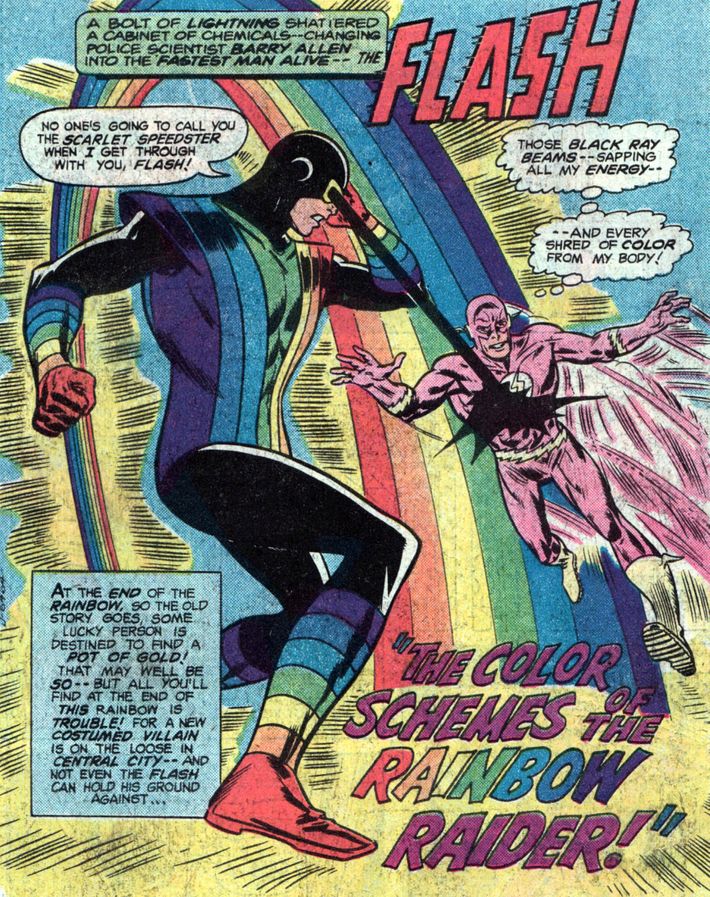
The Time-TravelerÔÇÖs Husband
When the best-loved version of the Flash, Barry Allen, was introduced in the 1950s, he had a journalist girlfriend ÔÇö very similar to Lois Lane ÔÇö named Iris West. She eventually learned his secret identity and married him, but that wasnÔÇÖt exciting enough for Flash fans. The Iris character on The Flash is very different (sheÔÇÖs the daughter of a police officer and a friend of BarryÔÇÖs since childhood), and we can only hope the producers spare her these twists and turns:
Barry and Iris attend a costume party, during which Barry was dosed with ÔÇ£angel dustÔÇØ (look it up, young people) and Iris was murdered by an escaped convict. But it turns out the doping and the murder were at the hands of FlashÔÇÖs time-traveling doppelg├ñnger from the 25th century, the aforementioned Reverse-Flash. See, Reverse-Flash was in love with Iris, and she rejected him ÔǪ and ÔǪ well ÔǪ thereÔÇÖs more.
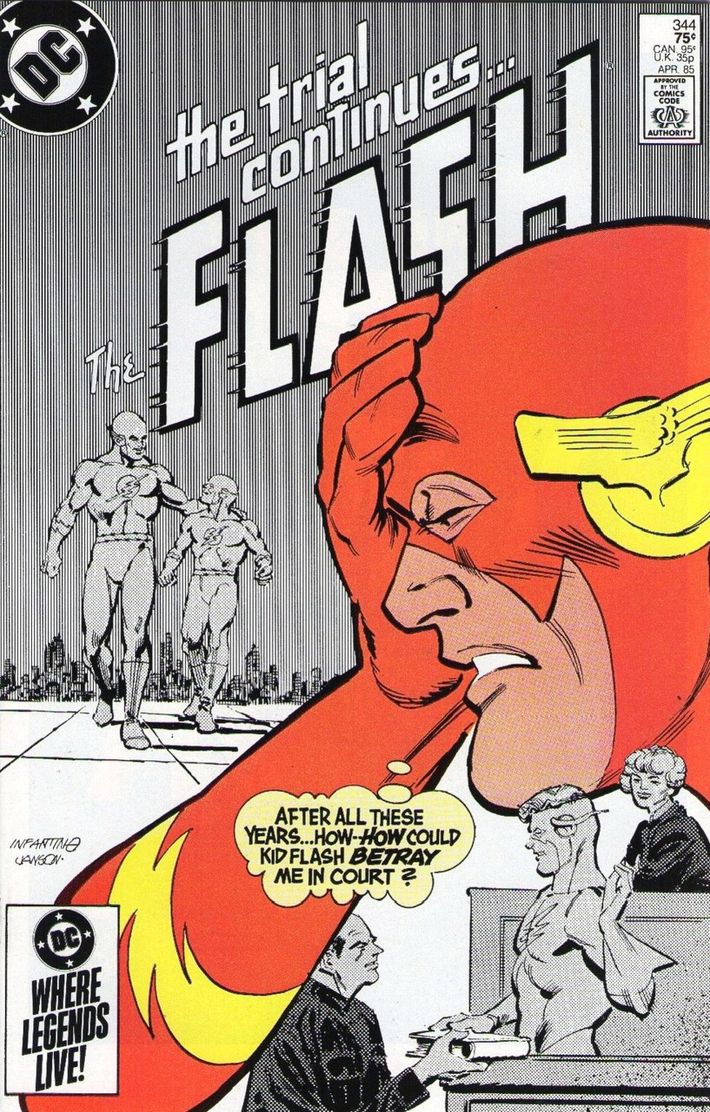
Flash eventually got over his loss, got engaged to someone new, and then learned the truth about the Reverse-FlashÔÇÖs complicity in IrisÔÇÖs death. When R-F showed up and threatened to kill FlashÔÇÖs new fianc├®e, the hero had a huge fight in which he saved the day by killing Reverse-Flash. Then there was a trial, which lasted for two years. What was the outcome? Well, it didnÔÇÖt really matter, because Iris wasnÔÇÖt dead. How, you might ask? Did I forget to mention Iris was a time-traveler from the 30th century? Well, her parents had sent her to the past to save her from a war, but once things were better, they looked up historical documents, learned their daughter was going to be murdered, and went back in time and fixed things. (Oh, but FlashÔÇÖs second fianc├®e did go insane, so thatÔÇÖs something.)
But thatÔÇÖs not the weirdest Flash story ever told. Not even close.
Why so Mopee?
By the standards of comic-book superhero origins, the Barry Allen Flash story is perfectly reasonable: A scientist stands in front of a giant rack of chemicals, is struck by a bolt of lightning, and gains super speed. (On the TV show, thereÔÇÖs a reactor using fancier energies that wind up giving Barry ÔÇö and a bunch of villains weÔÇÖll likely meet once a week ÔÇö his powers, but itÔÇÖs basically the same thing: bolt from the sky, chemicals, runs fast.) But in the late 1960s, a story was proposed to resolve the questions no one had ever seriously asked about his origin by introducing a much more logical source for his powers: a ÔÇ£heavenly help-mateÔÇØ named Mopee (think Clarence from ItÔÇÖs a Wonderful Life, but super-annoying), who was given the assignment of giving someone on Earth speed powers.
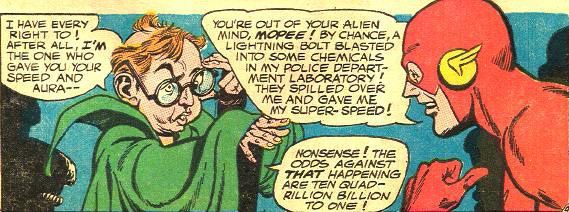
In the course of the story (never mentioned again in the subsequent 40-plus years, except as a joke), we learn that this is a more plausible explanation than made-up science.
In the TV world of The Flash, I can imagine our hero being drugged. I can imagine him fighting a video-game-based villain or a would-be Australian with a boomerang  hell, make it a didgeridoo. But if Mopee ever shows up, well know the show has jumped the shark. A regular shark, not the Green Lantern villain that was a hyperevolved shark with telepathic powers.
* This post initially theorized that Captain Boomerang would not make it onto the show. As some commenters have pointed out, he will indeed appear in the Flash/Green Arrow crossover.

